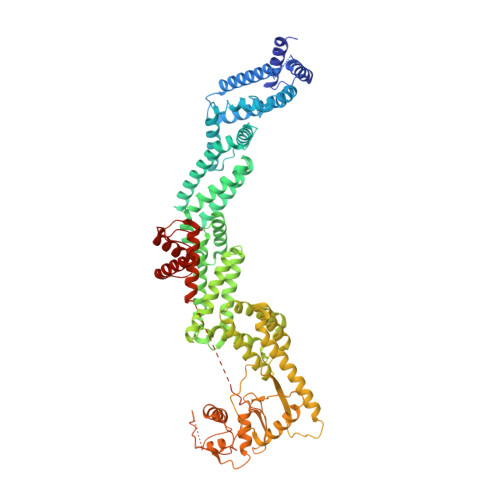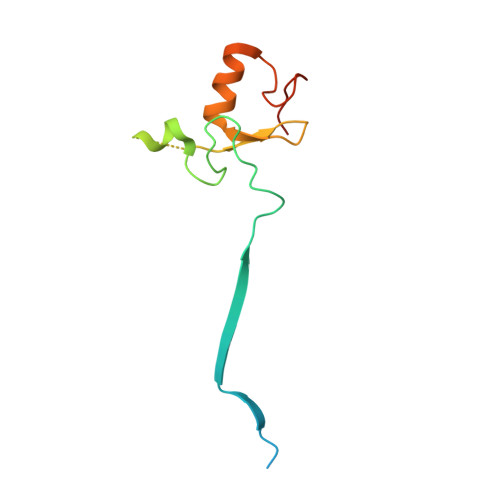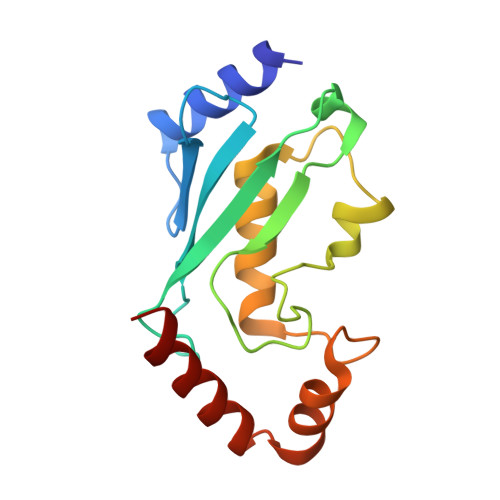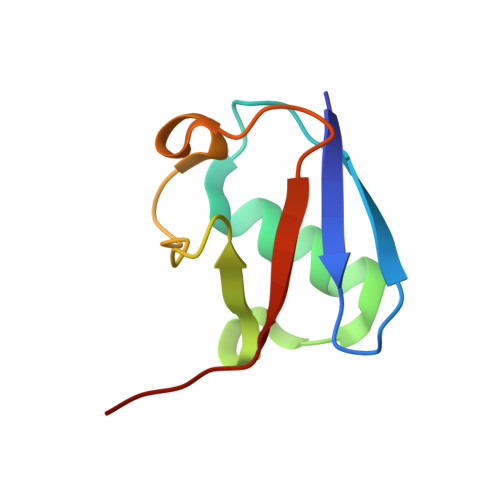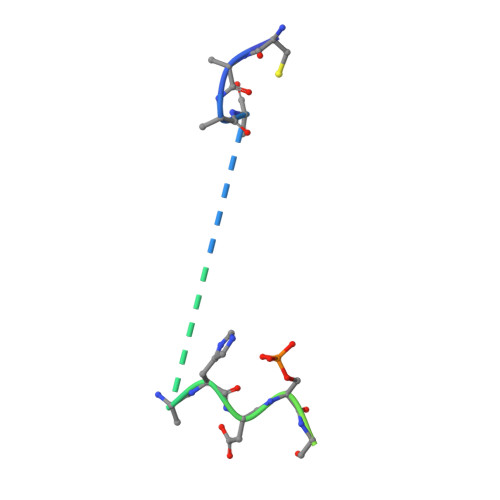NEDD8 nucleates a multivalent cullin-RING-UBE2D ubiquitin ligation assembly.
Baek, K., Krist, D.T., Prabu, J.R., Hill, S., Klugel, M., Neumaier, L.M., von Gronau, S., Kleiger, G., Schulman, B.A.(2020) Nature 578: 461-466
- PubMed: 32051583
- DOI: https://doi.org/10.1038/s41586-020-2000-y
- Primary Citation of Related Structures:
6TTU - PubMed Abstract:
Eukaryotic cell biology depends on cullin-RING E3 ligase (CRL)-catalysed protein ubiquitylation 1 , which is tightly controlled by the modification of cullin with the ubiquitin-like protein NEDD8 2-6 . However, how CRLs catalyse ubiquitylation, and the basis of NEDD8 activation, remain unknown. Here we report the cryo-electron microscopy structure of a chemically trapped complex that represents the ubiquitylation intermediate, in which the neddylated CRL1 β-TRCP promotes the transfer of ubiquitin from the E2 ubiquitin-conjugating enzyme UBE2D to its recruited substrate, phosphorylated IκBα. NEDD8 acts as a nexus that binds disparate cullin elements and the RING-activated ubiquitin-linked UBE2D. Local structural remodelling of NEDD8 and large-scale movements of CRL domains converge to juxtapose the substrate and the ubiquitylation active site. These findings explain how a distinctive ubiquitin-like protein alters the functions of its targets, and show how numerous NEDD8-dependent interprotein interactions and conformational changes synergistically configure a catalytic CRL architecture that is both robust, to enable rapid ubiquitylation of the substrate, and fragile, to enable the subsequent functions of cullin-RING proteins.
- Department of Molecular Machines and Signaling, Max Planck Institute of Biochemistry, Martinsried, Germany.
Organizational Affiliation:










